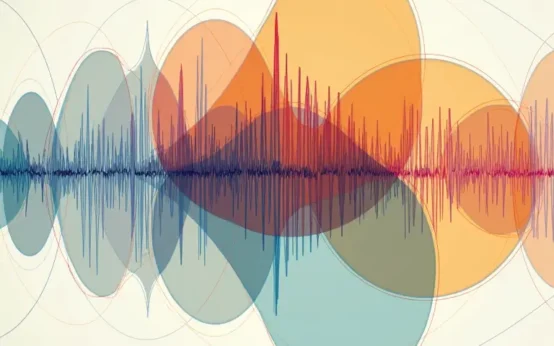Music. It’s a universal language, evoking emotions, telling stories, and shaping cultures. But beneath the beautiful melodies and complex rhythms lies a surprisingly consistent foundation: mathematics. For centuries, musicians have intuitively grasped mathematical principles, often without consciously realizing it. This article will explore the fascinating relationship between music and math, revealing how ratios, frequencies, and patterns underpin the harmonies we enjoy every day.
The Ancient Roots: Pythagoras and the Monochord
Our journey begins in ancient Greece, around 500 BC, with the philosopher and mathematician Pythagoras. While known for the Pythagorean theorem (a² + b² = c²), Pythagoras’s contributions to music are equally significant. Legend has it that he discovered the mathematical relationships underlying musical harmony while experimenting with a monochord – a single-stringed instrument.
Pythagoras noticed that when a string was halved, it produced a note an octave higher. This meant the ratio of the string lengths was 2:1, and the resulting notes sounded incredibly pleasing together. Further experimentation revealed other simple ratios corresponding to other harmonic intervals. A string length ratio of 3:2 produced a perfect fifth, and 4:3 produced a perfect fourth. These weren’t arbitrary discoveries; they pointed to a fundamental principle: consonant intervals – those that sound harmonious – are based on simple mathematical ratios.
It’s important to note that Pythagoras believed these ratios weren’t just descriptive; they *explained* why certain sounds were harmonious. He connected these mathematical harmonies to a broader cosmological order, believing the universe itself was governed by such proportions – a concept known as the ‘music of the spheres.’ While his cosmological ideas are no longer accepted, his musical observations remain foundational.
Frequency and Wavelength: The Physics of Sound
To understand the math behind musical harmony, we need to delve into the physics of sound. Sound is created by vibrations that travel as waves. Key characteristics of these waves include frequency and wavelength. Frequency refers to the number of vibrations per second, measured in Hertz (Hz). Wavelength is the distance between two successive crests or troughs of the wave.
The relationship between frequency (f), wavelength (λ), and the speed of sound (v) is defined by the equation: v = fλ. This means that higher frequencies correspond to shorter wavelengths and vice versa.
Our ears perceive frequency as pitch. A higher frequency means a higher pitch, and a lower frequency means a lower pitch. When two notes are played simultaneously, their frequencies interact. If the frequencies have a simple mathematical relationship (like those discovered by Pythagoras), the resulting sound is perceived as harmonious.
The Harmonic Series and Overtones
A single musical note isn’t just a single frequency. It’s actually a complex combination of frequencies called the harmonic series. The fundamental frequency is the lowest frequency and determines the perceived pitch. However, along with the fundamental, there are also overtones, which are frequencies that are multiples of the fundamental frequency.
For example, if the fundamental frequency is 100 Hz, the harmonic series would include frequencies of 200 Hz, 300 Hz, 400 Hz, and so on. These overtones contribute to the timbre or tone color of a sound, making a violin sound different from a piano even when playing the same note.
The strength of these overtones varies depending on the instrument and how the note is played. Instruments designed to emphasize certain overtones will have a richer, more complex sound. The mathematical relationships within the harmonic series are crucial for understanding consonance and dissonance.
Consonance and Dissonance: Why Some Intervals Sound Good (or Bad)
Consonance refers to intervals that sound pleasing and stable, while dissonance refers to intervals that sound harsh and unstable. The perception of consonance and dissonance is closely tied to the harmonic series and the degree of overlap between the overtones of two notes played simultaneously.
Consonant intervals, like octaves, fifths, and fourths, have overtones that align closely, creating a sense of reinforcement and stability. Dissonant intervals, like seconds and sevenths, have overtones that clash, creating a sense of tension. This tension isn’t necessarily negative; it’s what drives musical progression and creates interest.
Historically, composers have used dissonance to create dramatic effects, resolve tensions, and add emotional depth to their music. The use of dissonance has evolved over time, with later periods of music (like the 20th century) exploring more complex and extended dissonances than earlier periods.
The Circle of Fifths and Key Signatures
The circle of fifths is a visual representation of the relationships between the 12 tones of the chromatic scale. It’s based on the interval of a perfect fifth (a ratio of 3:2). Starting with C, moving clockwise around the circle adds a fifth to each note (C-G-D-A-E-B-F#-C#…).
The circle of fifths is incredibly useful for understanding key signatures. A key signature indicates which notes are sharp or flat in a particular key. The number of sharps or flats in a key signature is directly related to its position on the circle of fifths. Keys closer to C have fewer sharps or flats, while keys further away have more. This is because each move around the circle represents adding another fifth, and each fifth introduces a new sharp or flat.
The circle of fifths also helps explain why certain keys are more closely related than others. Keys that are adjacent on the circle of fifths share many common tones, making transitions between them smoother and more natural.
Mathematical Patterns in Rhythm and Meter
While harmony focuses on the vertical relationships between notes, rhythm and meter deal with the temporal organization of music. Mathematics plays a crucial role here as well.
Time signatures, for example, are based on fractions. A time signature of 4/4 indicates that there are four beats in a measure, and each beat is equal to a quarter note. More complex time signatures, like 7/8 or 5/4, create irregular rhythmic patterns.
Rhythmic patterns themselves often involve mathematical ratios. For example, a dotted note is equal to 1.5 times the length of a regular note. Syncopation involves placing emphasis on off-beats, creating rhythmic interest by disrupting the expected pattern.
Polyrhythms involve playing two or more different rhythms simultaneously. For example, playing three notes in the same time it takes to play two notes (a 3:2 polyrhythm) creates a complex and engaging rhythmic texture. These polyrhythms are essentially mathematical ratios expressed through sound.
The Golden Ratio and Musical Form
The golden ratio (approximately 1.618), often denoted by the Greek letter phi (Φ), is a mathematical constant that appears frequently in nature, art, and architecture. It’s also been suggested that the golden ratio appears in musical form.
Some researchers have argued that the golden ratio can be found in the proportions of musical sections, the placement of climaxes, and the duration of phrases. For example, the climax of a sonata form movement might occur at a point that corresponds to the golden ratio within the overall length of the movement. However, the presence of the golden ratio in musical form is a subject of debate, and its intentional use by composers is difficult to prove.
Fibonacci Sequence and Musical Structure
Closely related to the golden ratio is the Fibonacci sequence (0, 1, 1, 2, 3, 5, 8, 13, 21…). In this sequence, each number is the sum of the two preceding numbers. The ratio between consecutive Fibonacci numbers approaches the golden ratio as the sequence progresses.
Similar to the golden ratio, some have proposed that the Fibonacci sequence can be found in the structure of musical compositions. For example, the number of sections in a piece, the lengths of phrases, or the number of bars in a musical form might follow the Fibonacci sequence. Again, while intriguing, establishing definitive proof of intentional use is challenging.
Modern Applications: Digital Audio and Music Synthesis
The mathematical foundations of music are more relevant than ever in the digital age. Digital audio relies heavily on mathematical algorithms to represent, process, and manipulate sound.
Techniques like Fourier analysis decompose complex sounds into their constituent frequencies, allowing for precise editing and manipulation. Music synthesis uses mathematical models to create sounds from scratch, often based on the harmonic series and wave shapes. Algorithms are used to generate melodies, harmonies, and rhythms, pushing the boundaries of musical creativity.
The development of digital audio effects, like reverb, chorus, and delay, also relies on mathematical principles to simulate acoustic spaces and create unique sonic textures.
Beyond the Basics: Exploring Further Connections
The relationship between music and math extends far beyond the concepts discussed here. Mathematical concepts like group theory, set theory, and transformational theory have been applied to the analysis of musical structure. The field of music information retrieval (MIR) uses machine learning and statistical modeling to analyze and categorize music.
If you’re fascinated by the intersection of seemingly disparate fields, you might also enjoy exploring synesthesia, a neurological phenomenon where stimulation of one sense triggers experiences in another. Or delve into the science of weather lore, another area where observation and pattern recognition are key. The world is full of hidden connections waiting to be discovered! And if you are curious about other forms of coded communication, consider learning about the language of flowers or the intricacies of heraldry.
Conclusion
From the simple ratios discovered by Pythagoras to the complex algorithms used in modern music production, mathematics is an integral part of musical harmony. While musicians may not always be consciously aware of the underlying math, it’s there, shaping the sounds we love and influencing our emotional responses. Understanding this relationship can deepen our appreciation for both music and the beauty of the mathematical world. It demonstrates that art and science aren’t opposing forces, but rather complementary ways of understanding and experiencing the universe. Perhaps, as Pythagoras believed, music truly *is* the mathematics of the spheres.


 The Surprisingly Consistent Geometry of Traditional Origami: Beyond Folds, A History of Mathematical Precision
The Surprisingly Consistent Geometry of Traditional Origami: Beyond Folds, A History of Mathematical Precision  The Unexpectedly Consistent Math Behind Musical Instrument Tuning: Harmonics, Ratios & Perfect Pitch
The Unexpectedly Consistent Math Behind Musical Instrument Tuning: Harmonics, Ratios & Perfect Pitch  The Curious Math Behind Ancient Building Proportions – Harmony in Stone & Structure
The Curious Math Behind Ancient Building Proportions – Harmony in Stone & Structure  The Surprisingly Consistent Patterns in Traditional Folk Music Scales
The Surprisingly Consistent Patterns in Traditional Folk Music Scales  The Geometry of Everyday Objects: Hidden Math All Around Us
The Geometry of Everyday Objects: Hidden Math All Around Us